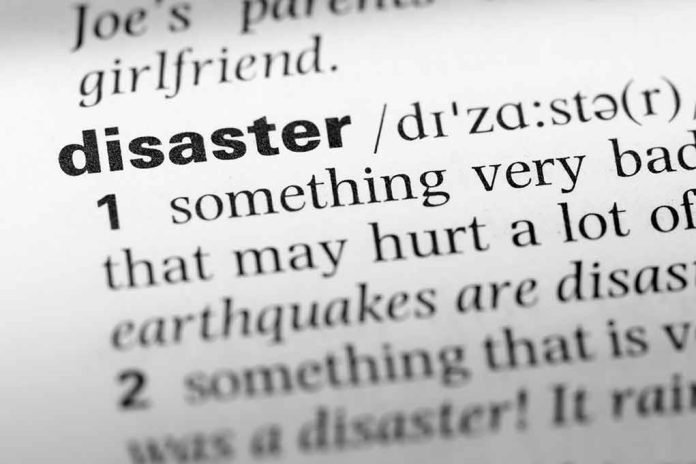
A deadly plane crash in South Korea claims 179 lives, raising questions about bird strikes, runway design, and airline safety protocols.
At a Glance
- Jeju Air Flight 7C2216 crashed at Muan International Airport, killing 179 passengers
- Initial reports suggest a bird strike, but investigators are exploring multiple factors
- The plane attempted to land without deploying its landing gear
- Concerns arise about runway design and potential safety oversights
- U.S. investigators join South Korean authorities in the probe
Tragic Crash Shocks South Korea
In a devastating incident that has shaken South Korea, Jeju Air Flight 7C2216 crashed at Muan International Airport, resulting in 179 fatalities. The Boeing 737-800, returning from Thailand, met a tragic end during its landing attempt, marking the deadliest aviation disaster in the country in decades. As the nation mourns, investigators are working tirelessly to uncover the cause of this catastrophic event.
The crash has sent shockwaves through the aviation industry, causing a significant drop in Boeing’s share price and leading to cancellations of Jeju Air flights. In response to the tragedy, South Korea has declared a seven-day mourning period, with world leaders, including President Joe Biden, expressing their condolences and support.
Bird Strike Theory Under Scrutiny
Initial reports from officials suggested a bird strike as the primary cause of the crash. The pilot reportedly declared an emergency, stating, “Mayday, mayday, mayday, bird strike, bird strike, going around.” However, aviation experts are questioning whether a bird strike alone could have led to such a catastrophic outcome.
“I think the thing that has stumped a lot of aviation experts is why that aircraft came in with its wheels up and its flaps not deployed. Obviously, before landing, you like to have both of those, the flaps down and the gear down. So the question was, why would the crew elect to do this?” said Miles O’Brien, aviation expert.
Investigators are focusing on the critical four minutes between the bird strike report and the crash, examining potential issues with the hydraulic system, crew error, or other factors that may have contributed to the failure to deploy the landing gear.
Aviation expert John Nance analyzes the Jeju Air Boeing 737-800 plane disaster that left 179 dead, saying that an encounter with birds may have contributed to the crash — one of the deadliest aviation incidents in South Korea’s history. pic.twitter.com/UTDHP4B2sg
— ABC News Live (@ABCNewsLive) December 31, 2024
Runway Design and Safety Concerns
The crash has brought attention to the runway design at Muan International Airport, particularly the presence of a concrete barrier at the end of the runway. Aviation safety experts are questioning whether this design feature may have contributed to the high fatality rate of the crash.
“Normally, on an airport with a runway at the end, you don’t have a wall,” noted Christian Beckert, aviation safety expert.
This incident has sparked discussions about potential safety improvements for runway designs globally, highlighting the need for comprehensive safety measures beyond just aircraft maintenance.
Investigation and Next Steps
South Korean authorities, assisted by American investigators, are conducting a thorough investigation into the crash. Two black boxes have been recovered, with the flight data recorder sent to the U.S. for analysis. The cockpit voice recorder, if successfully read, could provide crucial insights into the final moments before the crash.
“I think the cockpit voice recorder, if they’re able to read that out, that will be key to unlocking this mystery,” stated Robert Sumwalt, former NTSB chairman.
In response to the tragedy, South Korean authorities have announced plans to inspect all 737-800s operated by domestic airlines. This comprehensive review aims to ensure the safety of similar aircraft and prevent future incidents.
As the investigation continues, the aviation industry and the public await answers about the cause of this devastating crash. The findings will likely have far-reaching implications for airline safety protocols and runway designs worldwide, potentially leading to significant changes in the aviation sector.
Sources:
- ‘Sinister’: Big question about plane crash in South Korea, nation’s deadliest in history | news.com.au
- From Bird Strike to Crash: The Mystery of the Korean Plane’s Four Fateful Minutes
- What We Know About Jeju Air Crash: 179 Dead In South Korea As Investigators Probe






